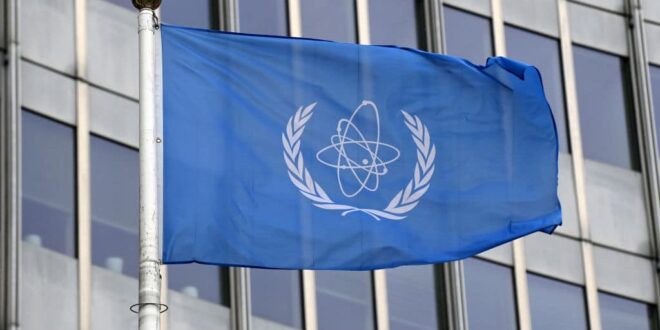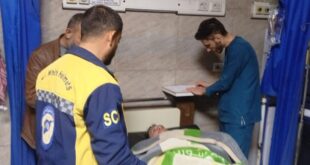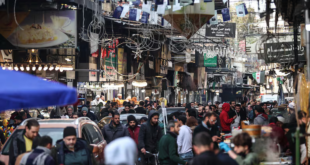Excerpt
Background
This report summarizes and assesses information in the International Atomic Energy Agency’s (IAEA’s) quarterly report, dated August 29, 2024, Verification and monitoring in the Islamic Republic of Iran in light of United Nations Security Council resolution 2231 (2015), including Iran’s compliance with the Joint Comprehensive Plan of Action (JCPOA).Findings
Iran can produce more weapon-grade uranium (WGU) since the IAEA’s last report in May 2024 due to increased stocks of enriched uranium and a greatly enlarged advanced centrifuge capacity. Iran’s stocks of enriched uranium and its centrifuge capacity combined are sufficient to make enough WGU, taken as 25 kilograms (kg) of WGU per weapon, for nine nuclear weapons in one month, 12 in two months, 13 in three months, 14 in four months, and 15 in five months.
With Iran’s growing enrichment experience and using only a portion of its stock of 60 percent highly enriched uranium (HEU) and only four advanced centrifuge cascades, Iran could produce its first quantity of 25 kg of WGU in about one week. This breakout could be difficult for the IAEA to detect promptly, if Iran delayed inspectors’ access.
The installation of eight more IR-6 cascades at the deeply buried Fordow Fuel Enrichment Plant (FFEP) since the last report means that Fordow alone could allow Iran to break out within days. With careful planning in advance and placement of all the stocks of 20 and 60 percent enriched uranium at the FFEP, it could produce enough WGU for four nuclear weapons in about two weeks and enough for almost six in a month. By the end of the second month, it could make enough WGU for nine nuclear weapons. If Iran used only less than five percent enriched uranium, it would need about 1.5 months to make enough WGU for a nuclear weapon. If it used only natural uranium, it would need about five and a half months to produce enough WGU for a weapon. The installation of more IR-6 centrifuge cascades, as planned, would worsen the situation.
The IAEA pointedly admonishes Iran over its “continued accumulation” of HEU, noting it is “the only non-nuclear weapon State to do so, [adding] to the Agency’s concerns.”
The IAEA’s efforts to verify Iran’s nuclear activities, particularly its uranium enrichment activities, continue to be seriously affected by Iran’s decision last fall to withdraw the designation of several experienced inspectors. Despite repeated calls by the IAEA that Iran reconsider this inappropriate, political act, including in a June 2024 Board of Governors censure resolution, Iran has failed to reverse course. The IAEA reports Atomic Energy Organization of Iran (AEOI) chief Mohammad Eslami told the IAEA on June 6 that Iran’s position on the matter “is unchanged and this position will remain as it is.”Contrary to a demand in the board’s June 2024 resolution that Iran implement the IAEA/Iran Joint Statement from March 2023, the IAEA reports no new progress on installing new surveillance cameras at Iran’s nuclear-related facilities, including centrifuge manufacturing and assembly sites. Iran has also said it will not turn over data or footage associated with monitoring devices and cameras, as it committed in the statement, unless sanctions are removed, essentially holding the IAEA hostage to political developments outside the agency’s control.
The absence of monitoring and surveillance equipment, particularly since June 2022, has caused the IAEA to doubt its ability to ascertain whether Iran has diverted or may divert advanced centrifuges. A risk is that Iran could accumulate a secret stock of advanced centrifuges, deployable in the future at a clandestine enrichment plant or during a breakout at declared sites. Another risk is that Iran will establish additional centrifuge manufacturing sites unknown to the IAEA. Iran has proven its ability to secretly move manufacturing equipment to new, undeclared sites, further complicating any future verification effort and contributing to uncertainty about where Iran manufactures centrifuges.
The IAEA concludes that “Iran’s decision to remove all of the Agency’s equipment previously installed in Iran for JCPOA-related surveillance and monitoring activities has [had] detrimental implications for the Agency’s ability to provide assurance of the peaceful nature of Iran’s nuclear [program].”Concern about Iran’s installation of advanced centrifuges at an undeclared site increases as the 60 percent HEU stocks grow. Such a scenario is becoming more worrisome and viable, since a relatively small number of advanced centrifuge cascades would suffice for the rapid enrichment of the 60 percent HEU to weapon-grade. This hybrid strategy involves Iran diverting safeguarded HEU and enriching the material to weapon-grade using three or four secretly manufactured and deployed cascades of advanced centrifuges. With greater uncertainty about the quantity of advanced centrifuges Iran is making, there is a greater chance of Iran hiding away the requisite number of advanced centrifuges to carry out this scenario.
Combined with Iran’s refusal to resolve outstanding safeguards violations and the program’s unresolved nuclear weapons dimensions, the IAEA has a significantly reduced ability to monitor Iran’s complex and growing nuclear program, at a time when Iran is also under new scrutiny by U.S. and Israeli intelligence for conducting nuclear weapons-related activities. The IAEA’s ability to detect diversion of nuclear materials, equipment, and other capabilities to undeclared facilities remains greatly diminished. Eurasia Press & News
Eurasia Press & News




